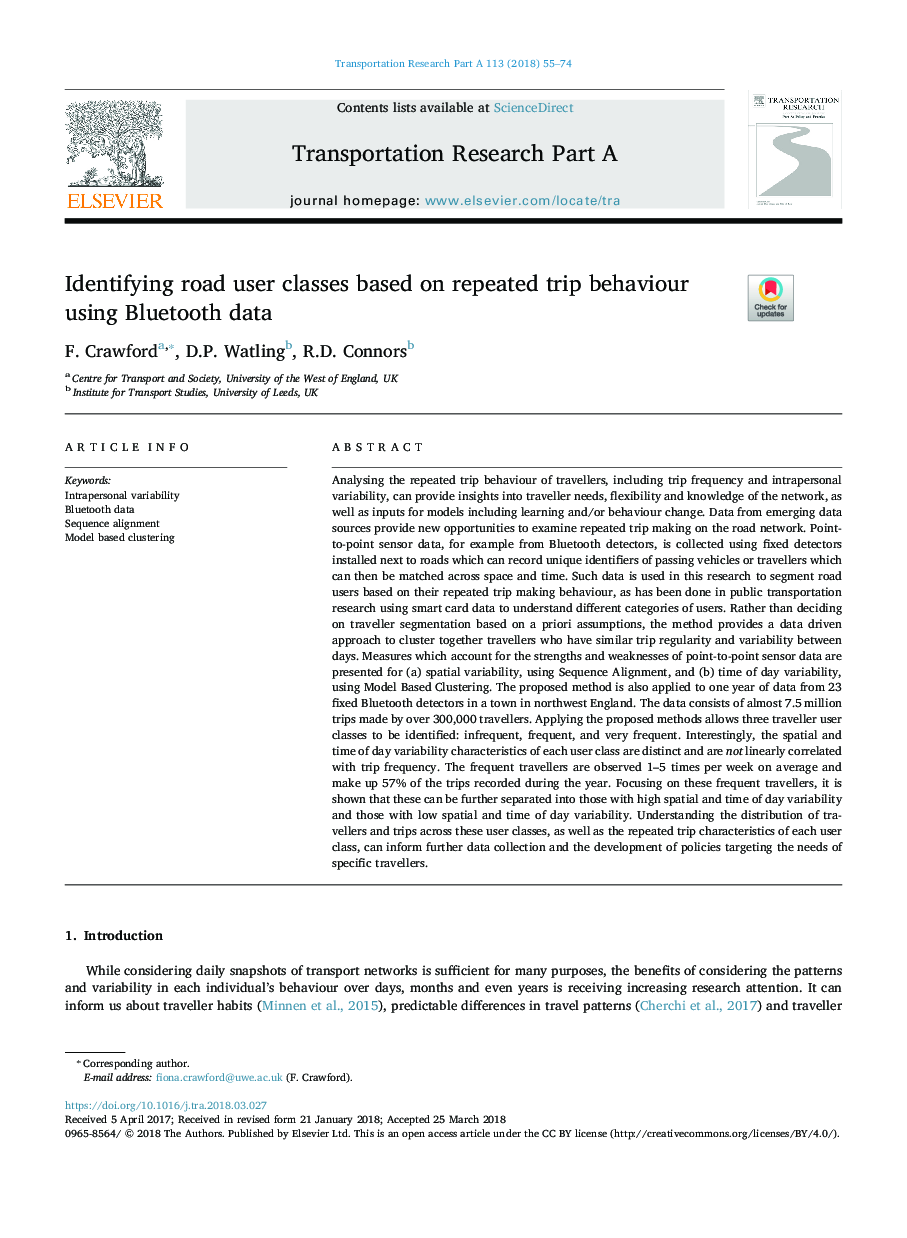| کد مقاله | کد نشریه | سال انتشار | مقاله انگلیسی | نسخه تمام متن |
|---|---|---|---|---|
| 6780080 | 1432187 | 2018 | 20 صفحه PDF | دانلود رایگان |
عنوان انگلیسی مقاله ISI
Identifying road user classes based on repeated trip behaviour using Bluetooth data
ترجمه فارسی عنوان
شناسایی کلاسهای کاربر جاده بر اساس رفتار سفر تکراری با استفاده از داده های بلوتوث
دانلود مقاله + سفارش ترجمه
دانلود مقاله ISI انگلیسی
رایگان برای ایرانیان
کلمات کلیدی
تنوع درون فردی، اطلاعات بلوتوث، ترتیب توالی، خوشه بندی مبتنی بر مدل،
موضوعات مرتبط
مهندسی و علوم پایه
سایر رشته های مهندسی
مهندسی عمران و سازه
چکیده انگلیسی
Analysing the repeated trip behaviour of travellers, including trip frequency and intrapersonal variability, can provide insights into traveller needs, flexibility and knowledge of the network, as well as inputs for models including learning and/or behaviour change. Data from emerging data sources provide new opportunities to examine repeated trip making on the road network. Point-to-point sensor data, for example from Bluetooth detectors, is collected using fixed detectors installed next to roads which can record unique identifiers of passing vehicles or travellers which can then be matched across space and time. Such data is used in this research to segment road users based on their repeated trip making behaviour, as has been done in public transportation research using smart card data to understand different categories of users. Rather than deciding on traveller segmentation based on a priori assumptions, the method provides a data driven approach to cluster together travellers who have similar trip regularity and variability between days. Measures which account for the strengths and weaknesses of point-to-point sensor data are presented for (a) spatial variability, using Sequence Alignment, and (b) time of day variability, using Model Based Clustering. The proposed method is also applied to one year of data from 23 fixed Bluetooth detectors in a town in northwest England. The data consists of almost 7.5â¯million trips made by over 300,000 travellers. Applying the proposed methods allows three traveller user classes to be identified: infrequent, frequent, and very frequent. Interestingly, the spatial and time of day variability characteristics of each user class are distinct and are not linearly correlated with trip frequency. The frequent travellers are observed 1-5 times per week on average and make up 57% of the trips recorded during the year. Focusing on these frequent travellers, it is shown that these can be further separated into those with high spatial and time of day variability and those with low spatial and time of day variability. Understanding the distribution of travellers and trips across these user classes, as well as the repeated trip characteristics of each user class, can inform further data collection and the development of policies targeting the needs of specific travellers.
ناشر
Database: Elsevier - ScienceDirect (ساینس دایرکت)
Journal: Transportation Research Part A: Policy and Practice - Volume 113, July 2018, Pages 55-74
Journal: Transportation Research Part A: Policy and Practice - Volume 113, July 2018, Pages 55-74
نویسندگان
F. Crawford, D.P. Watling, R.D. Connors,
